A biochar solution for urban runoff
CEE researchers test biologically derived charcoal filters and fungi as tools in purifying city waters, a step towards eco-friendly solutions.
By: Julia Davis
Photos: Mark Stone /University of Washington
Top image: CEE graduate student Amy Quintanilla waters the plants with contaminant-laden water.
In cities around the globe, stormwater runoff remains largely untreated, collecting everything from heavy metals to pesticides before flowing into our waterways. This environmental challenge requires innovative solutions, and biochar may just be the key.
CEE Assistant Professor Jessica Ray and graduate student Amy Quintanilla are exploring how this sustainable material, made from recycled food waste, can not only integrate with natural environments, but also effectively filter out harmful contaminants from stormwater. Their research presents a potential solution to tackling urban water pollution, offering hope for healthier ecosystems and safer water sources.

“What we're doing here has the potential to change the way cities manage stormwater”
The promise of biochar
Stormwater is a leading cause of nonpoint source pollution in urban watersheds, according to Ray, who is the Robert O. and Irene V. Sylvester Family Endowed Professor in Water Resources. But most cities have no formal treatment process for it. This runoff collects contaminants as it flows across city surfaces, from roads to rooftops, before discharging into rivers and oceans largely untreated. The implications of this process are far-reaching, affecting water quality, wildlife and human health.
At the heart of Ray and Quintanilla's research lies biochar, a black charcoal-like substance rich in carbon and made by burning organic materials at high temperatures in an environment with limited oxygen. Biochar can be made from a variety of waste products. Ray’s research relies on biochar that her team makes in the lab using recycled coffee grounds from campus coffee suppliers.
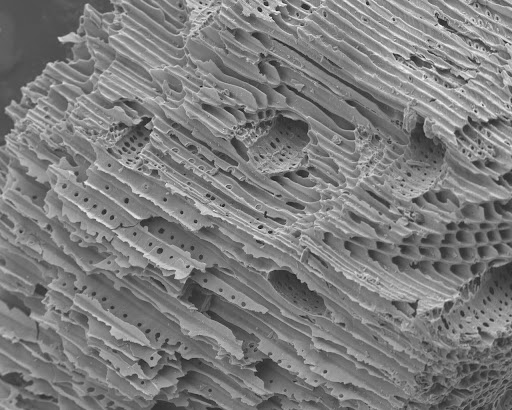
The key characteristic that makes biochar so effective in environmental applications is its highly porous structure, which provides a large surface area for the adsorption of pollutants. By converting waste into biochar, not only is the volume of waste reduced, but its transformation into a beneficial product contributes to a mutually beneficial cycle, turning potential pollutants into tools for environmental remediation.
“The biochar that we're designing is specifically targeted to filter out the contaminants we find most harmful in stormwater,” Ray says.
This tailored approach ensures that biochar is highly effective at capturing pollutants like heavy metals and “forever chemicals” like PFAS, which are prevalent in urban runoff and never break down in the environment.
Related research
Environmental engineering
Aquatic Innovations in Material Sciences (AIMS) Lab
Jessica Ray’s Aquatic Innovations in Material Sciences (AIMS) Lab conducts research that bridges materials science and surface chemistry with traditional water quality techniques to investigate ways to increase urban water supply sustainability.
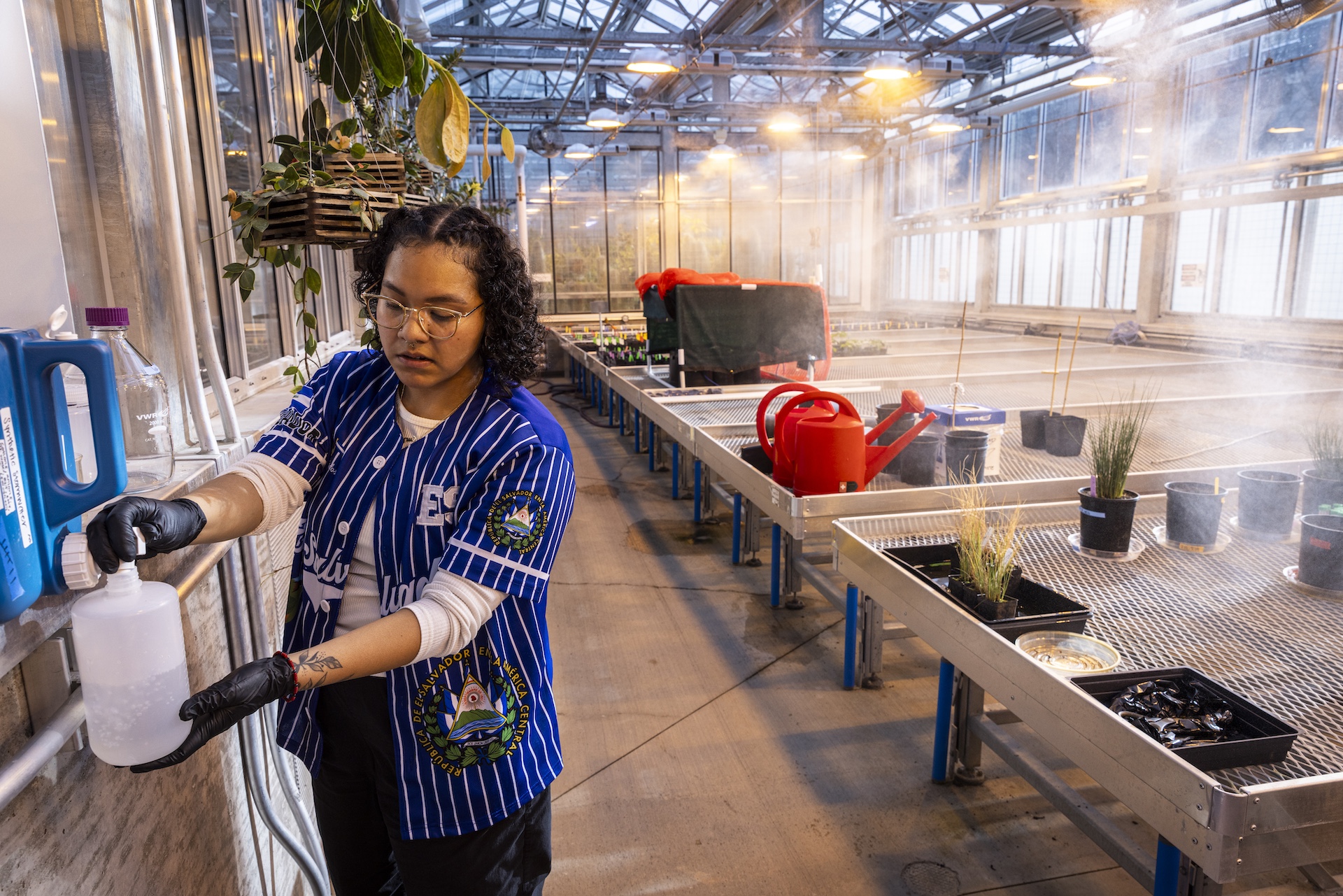
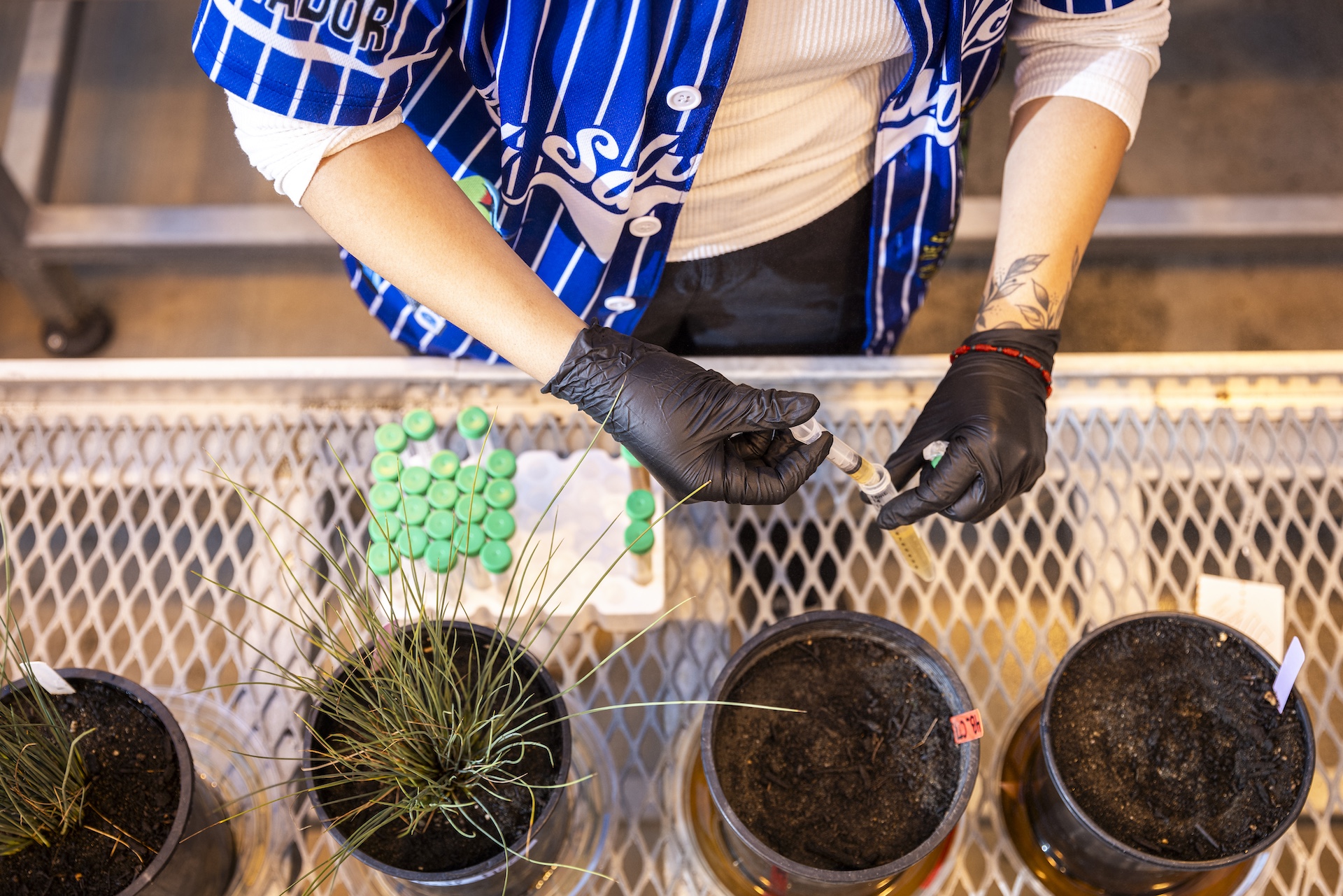
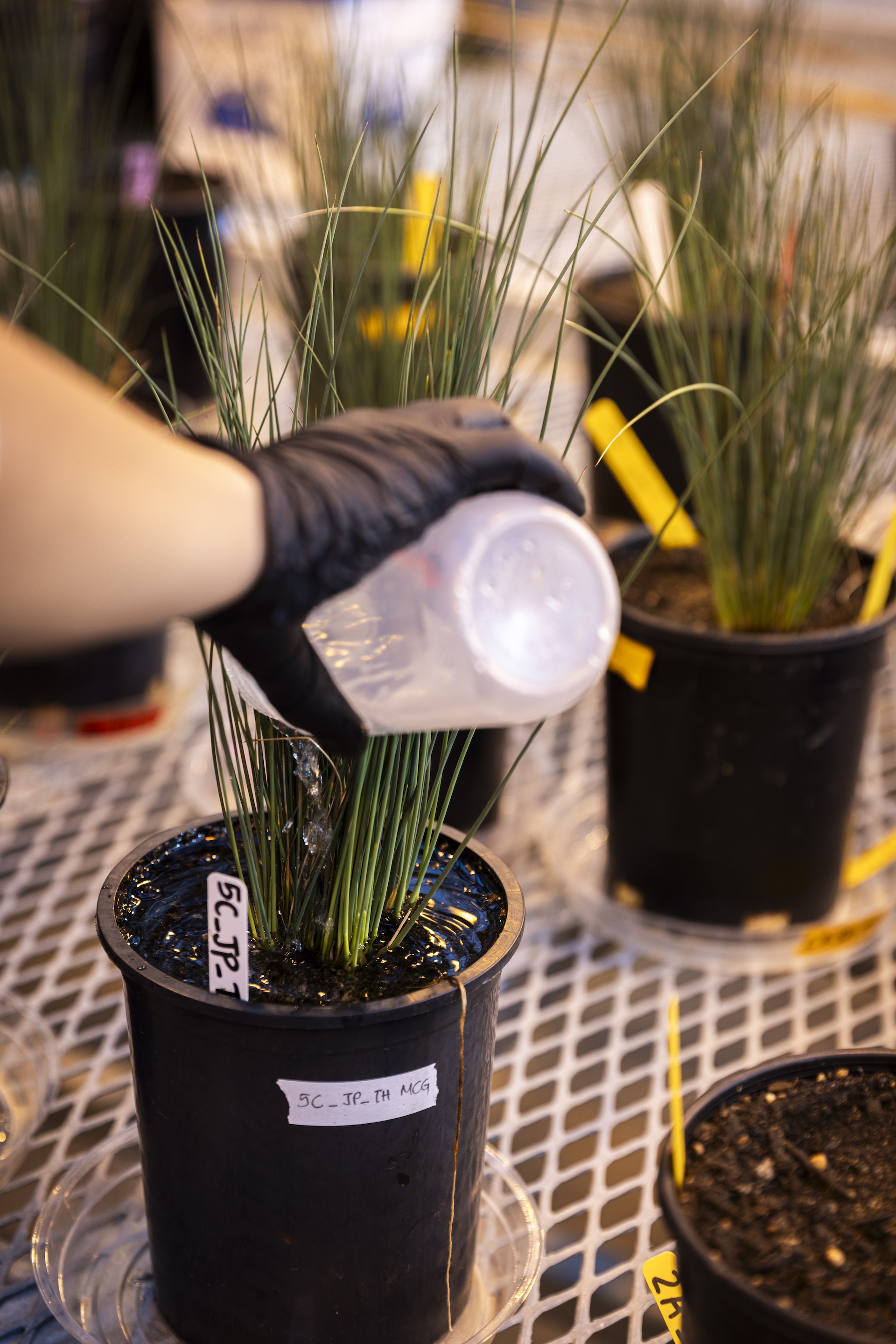
Left: Quintanilla fills a container with a contaminated water solution in preparation for testing the pollutant-absorbing effectiveness of biochar and fungi. Top right: Quintanilla takes samples from the effluent water that has run through the plant soil to test the efficacy of biochar and fungi in removing contaminants. Bottom right: Quintanilla pours a solution simulating contaminated stormwater onto a plant planted in soil containing biochar and fungi.
Green lab trials
To see how Ray’s version of biochar behaves when it comes to cleaning stormwater, Quintanilla is conducting experiments to assess its efficacy in removing harmful pollutants from stormwater, specifically targeting acetaminophen, benzotriazole and sulfamethoxazole—common yet concerning substances found in pharmaceuticals and personal care products. These contaminants, pervasive in our daily lives, often find their way into our stormwater systems and from there, into natural water bodies.
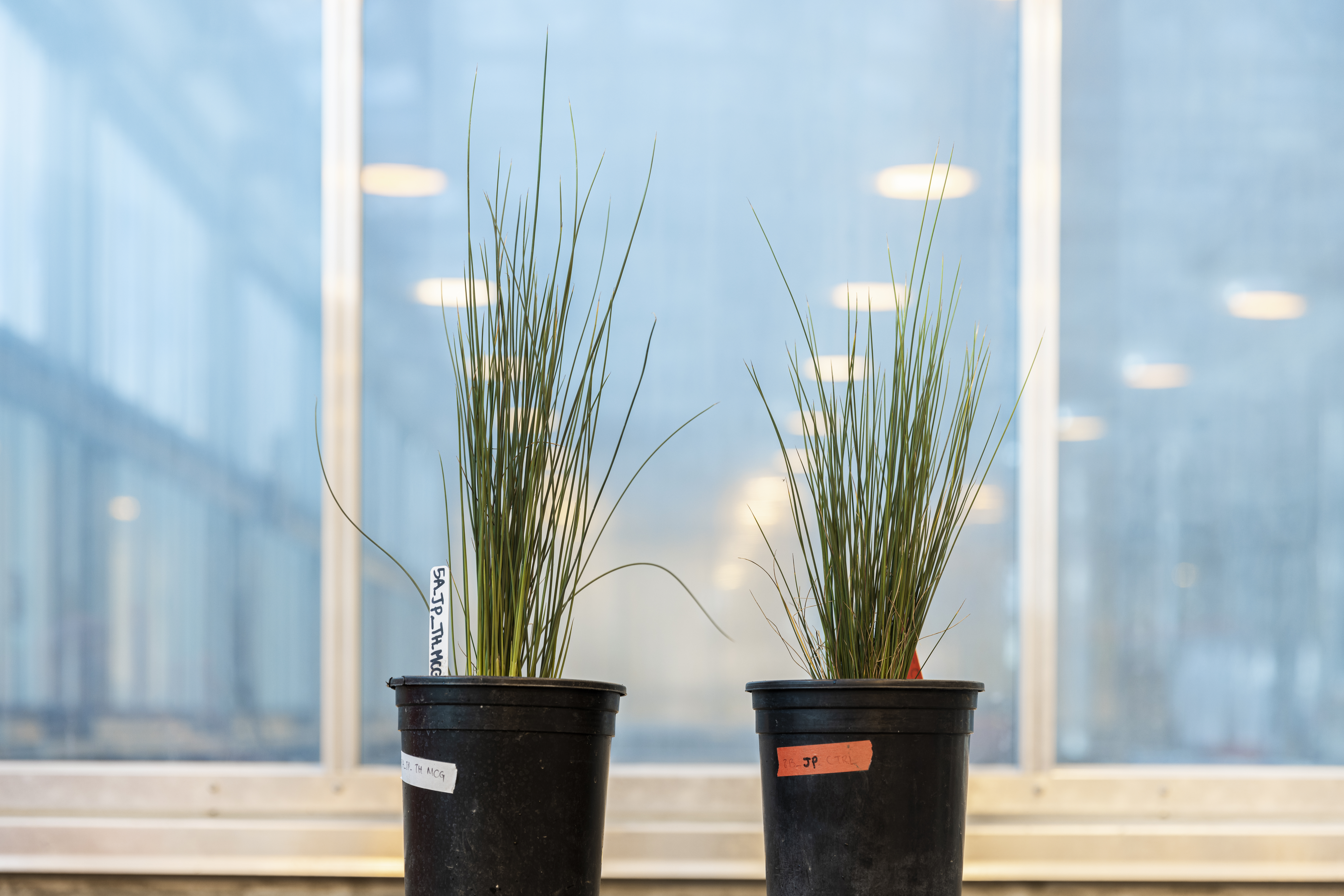
Quintanilla’s experimental design involves growing Juncus patens plants in varied conditions: some are planted in untreated soil, others in soil mixed with biochar, and a third group in soil treated with a combination of biochar and beneficial fungi obtained from the lab of fellow CEE Professor Mari Winkler. By watering these plants with a solution that mimics contaminated stormwater, the study evaluates the biochar's ability to filter out pollutants as well as its impact on the health of the plants and, by extension, the surrounding ecosystem.
The exploration of the symbiotic relationship between biochar and fungi looks into a new strategy in environmental remediation, introducing the concept of mycoremediation into the mix. Mycoremediation is a green technique that utilizes fungi to break down or remove pollutants from the environment. The technique leverages the natural ability of fungi to secrete enzymes that can degrade complex and harmful substances into less toxic forms.
In Ray and Quintanilla’s experiment, they are adding the fungus Trichoderma harzianum in an attempt to enhance the biochar's effectiveness in absorbing pollutants while also exploring the biochar/fungus system’s ability to break down these pollutants more effectively. This dual-action strategy offers a promising avenue for utilizing natural processes to detoxify stormwater runoff, potentially making the biochar and fungus system a more comprehensive tool in combating urban water pollution.
We're not just assessing biochar's capacity for removing contaminants, but we are deeply interested in how it influences the broader environmental health into which it is introduced”
“This specific fungus was chosen for its ability to potentially use the biochar as a food source, thereby increasing contaminant absorption and promoting contaminant degradation,” Quintanilla explains.
Moreover, there's an underlying hope that the fungus will support plant growth, adding another layer of environmental benefit to the biochar application. This approach of blending biochar with beneficial fungi could have far-reaching effects on sustainable stormwater treatment by leveraging natural processes for a greener future.
This holistic approach underlines the experiment's aim to measure how well biochar removes pollutants, as well as understand its potential benefits or drawbacks to plant life and ecosystem health.
The choice of contaminants — reflecting common exposure in urban environments — highlights the study's relevance to current environmental challenges. Through this research, the team seeks to provide insights into how biochar could be a key component in sustainable urban stormwater management, offering a dual benefit of water purification and environmental enhancement.
By exploring the potential of biochar, they aim to address the technical aspects of water filtration and contribute to the broader conversation about sustainable urban development and environmental protection.
“Our goal is to create a filtration media that can be easily integrated into existing water management systems,” says Ray.
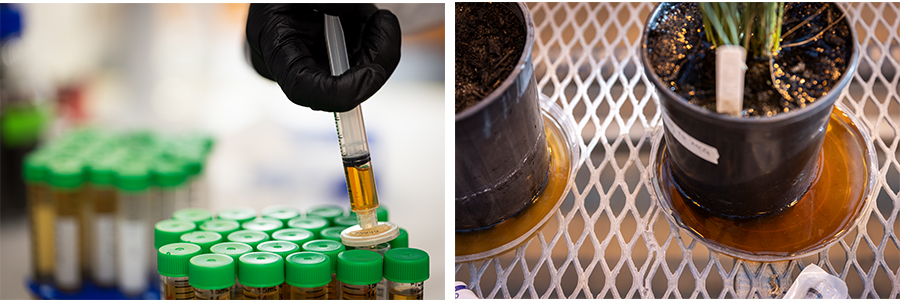
Toward clearer waters
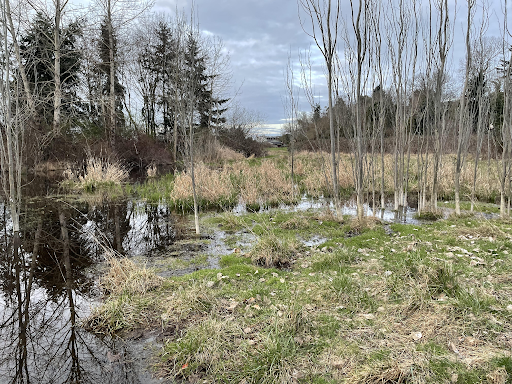
Ray and Quintanilla's research has implications far beyond the lab. By showing biochar's efficacy in reducing stormwater pollutants, their work could serve as a blueprint for integrating this material into urban water management strategies.
“What we're doing here has the potential to change the way cities manage stormwater,” Ray says. “Our goal is to make water treatment more accessible and effective, especially in areas that might lack the resources for more conventional treatment systems.”
Ray and Quintanilla hope that studying the relationship between biochar, fungi and plant systems will eventually lead to a method of stormwater treatment where water purification processes are seamlessly integrated into the urban landscape, enhancing ecosystem health and resilience along the way.
Our Grand Challenges
The work showcased in this story exemplifies our department's dedication to the Grand Challenges — pursuing innovative solutions for a changing climate, enhancing resilience against natural hazards, and fostering socioeconomic and environmental justice.